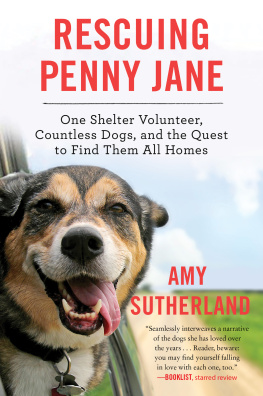Table of Contents
Guide
Rescue and Shelter Dogs

Alex Summers

rourkeeducationalmedia.com | 
Scan for Related Titles
and Teacher Resources |
Before & After
Reading Activities | Level: LWord Count: 100th word: has |
Before Reading:
Building Academic Vocabulary and Background Knowledge
Before reading a book, it is important to tap into what your child or students already know about the topic. This will help them develop their vocabulary, increase their reading comprehension, and make connections across the curriculum.
1.Look at the cover of the book. What will this book be about?
2.What do you already know about the topic?
3.Lets study the Table of Contents. What will you learn about in the books chapters?
4.What would you like to learn about this topic? Do you think you might learn about it from this book? Why or why not?
5.Use a reading journal to write about your knowledge of this topic. Record what you already know about the topic and what you hope to learn about the topic.
6.Read the book.
7.In your reading journal, record what you learned about the topic and your response to the book.
8.After reading the book complete the activities below.
Content Area Vocabulary
Read the list. What do these words mean?
adopted
exercise
euthanized
facility
fostered
neutering
organizations
relinquished
spaying
volunteer
After Reading:
Comprehension and Extension Activity
After reading the book, work on the following questions with your child or students in order to check their level of reading comprehension and content mastery.
1.Explain the difference between fostering a dog and adopting a dog. (Summarize)
2.Can rabies affect humans? Explain. (Asking Questions)
3.What are some ways you can help your local rescue or shelter? (Text to self connection)
4.Why is it important to visit a shelter a few times when looking for a dog? (Summarize)
5.Why are volunteers an important part of rescues and shelters? (Asking Questions)
Extension Activity
Raise awareness! Write a persuasive essay on why you should adopt a dog from a rescue or shelter. Research and visit your local animal shelter or rescue and talk with the people who volunteer. Research facts on the Internet from reliable sources such as The Humane Society. Then share your essay with your classmates, parents, or local newspaper.
Chapter 1
What is a Dog Rescue?
Have you ever heard of a dog rescue? A dog rescue takes in abused or neglected dogs, or dogs that are surrendered by their owners. They also take in dogs that are in danger of being in an animal shelter.

FURRY FACT
Low adoption rates are one factor driving the high number of animals in shelters. Another factor is the millions of dogs relinquished by their owners or rescued from the streets by private rescue organizations. These circumstances leave shelters and rescue groups with a large number of animals in need of homes.
.
Since 2009, The Dog Liberator has rescued, rehabilitated, spayed or neutered, and re-housed over 900 dogs throughout the Southeast! Gisele Veilleux is the president and founder of The Dog Liberator.

Gisele Veilleux is an advocate for the well-being of animals, especially dogs.
FURRY FACT
The Dog Liberator is a non-profit organization dedicated to rescuing homeless and abandoned dogs, primarily dogs from high-kill shelters and owners who can no longer care for them. By working with committed volunteers, local veterinarians, trainers, and foster homes, they are able to rescue hundreds of dogs every year. To learn more about The Dog Liberator visit their website at www.thedogliberator.com

Veterinarians will often take care of the dogs without charging money just to make sure they get the proper care they need.
After being rescued the dog is sent to a veterinarian to be tested for diseases like heartworms, rabies, parvo, or signs of neglect or abuse. They also check to see if the animal has been spayed or neutered, and if they have a microchip or tattoo that could identify the owner.
FURRY FACT
Rabies is a viral disease that affects the central nervous system.
Rabies can infect any warm-blooded animal.
who works with the rescue. These volunteers may work for more than one rescue at a time and have more than one dog at a time. A foster plays an important role in learning about the dogs temperament, and how well they get along with other animals or children making it easier for the dog to find a forever home.

Fostering is one of the biggest roles in a rescue organization. It takes a lot of time and love but the return you get is well worth it!
Fostering more than one dog can be a challenge but it often helps the dog integrate back into a family or pack.
FURRY FACT
To become a foster, you must be accepted by the rescue and meet the qualifications needed to take responsibility of the dogs while they are in your care. Fosters must also be willing to transport and house the dogs, have space for them to get proper exercise, and make sure they get the veterinary care they need.
Chapter 2
What is a Dog Shelter?
A shelter is a where animals are housed until they can find new homes, or can be returned to their owners. Every year in the United States 7.6 million animals enter shelters with 3.9 million of those being dogs.
Animal shelters can be categorized in three different ways: municipal animal shelters that are run by city or county governments, private non-profit shelters that are overseen by a board of directors, and private non-profit shelters with a government contract that act to provide animal control services.



















